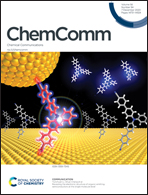New insights into unusual droplets: from mediating the wettability to manipulating the locomotion modes
Abstract
The ability to manipulate droplets can be utilized to develop various smart sensors or actuators, endowing them with fascinating applications for drug delivery, detection of target analytes, environmental monitoring, intelligent control, and so on. However, the stimuli-responsive superhydrophobic/superhydrophilic materials for normal water droplets cannot satisfy the requirements from some certain circumstances, i.e., liquid lenses and biosensors (detection of various additives in water/blood droplets). Stimuli-responsive wetting/dewetting behaviors of exceptional droplets are open issues and are attracting much attention from across the world. In this perspective article, the unconventional droplets are divided into three categories: ionic or surfactant additives in water droplets, oil droplets, and bubble droplets. We first introduce several classical wettability models of droplets and some methods to achieve wettability transition. The unusual droplet motion is also introduced in detail. There are four main types of locomotion modes, which are vertical rebound motion, lateral motion, self-propulsion motion, and anisotropic wettability controlled sliding behavior. The driving mechanism for the droplet motion is briefly introduced as well. Some approaches to achieve this manipulation goal, such as light irradiation, electronic, magnetic, acid–base, thermal, and mechanical ways will be taken into consideration. Finally, the current researches on unconventional droplets extending to polymer droplets and liquid metal droplets on the surface of special wettability materials are summarized and the prospect of unconventional droplet research directions in the field of on-demand transport application will be proposed.



 Please wait while we load your content...
Please wait while we load your content...